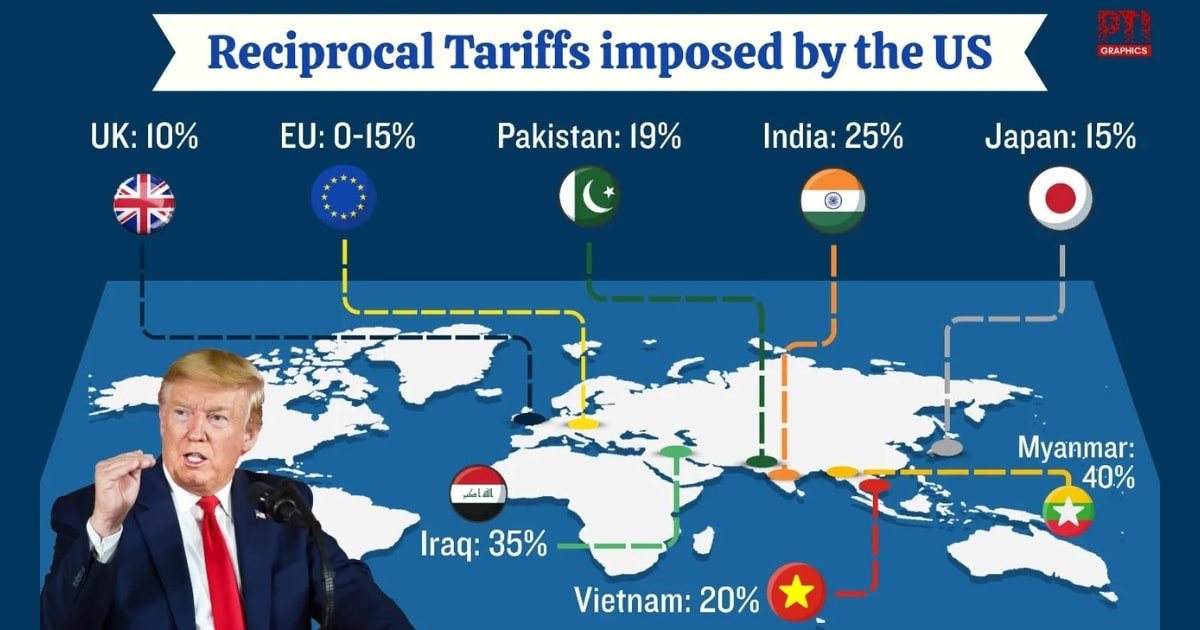On August 7, 2025, new U.S. tariffs officially came into effect under the Trump administration’s “reciprocal tariffs” policy.
The tariffs vary by country and are part of a broader attempt to rebalance global trade and penalize countries over strategic disagreements.
Pakistan’s Position: No Punitive Tariffs
- Parliamentary Secretary for Commerce, Zulfiqar Ali Bhatti, confirmed that no punitive tariffs have been imposed on Pakistani exports.
- A previously anticipated 19% tariff was implemented, but it remains lower than those imposed on regional competitors.
- The Pakistani government credited diplomatic efforts for the favorable outcome.
- Authorities are now working closely with exporters and trade bodies to maintain competitiveness in the U.S. market.
India Faces 50% Tariff Blow!
- A 25% tariff on all Indian goods came into effect on August 7, following a U.S. executive order signed on August 1.
- This is in addition to an earlier 10% baseline tariff already in place.
- On August 6, President Trump announced another 25% “secondary tariff” specifically targeting India’s continued import of Russian oil.
- This second wave of tariffs will take effect around August 27, pushing India’s total tariff burden to 50%.
- The steep increase places India at a severe disadvantage compared to countries like Pakistan, which face lower or no added tariffs.
Wider Global Impact
- Tariffs implemented on August 7 affect dozens of countries, ranging from 10% to over 40%.
- Some nations—like the UK and EU—secured reduced rates through direct agreements.
- Others, including Brazil, face tariffs as high as 50%, similar to India.
- Reactions remain mixed:
- U.S. officials call the policy vital for national security and trade fairness.
- Economists and global institutions warn of rising inflation, consumer costs, and supply chain disruptions.







